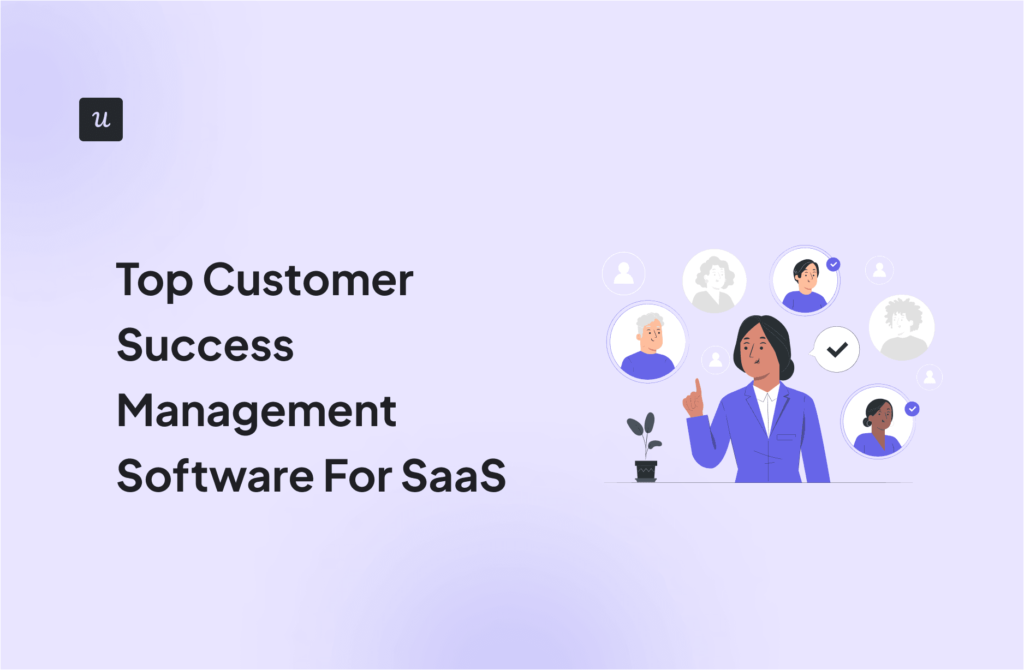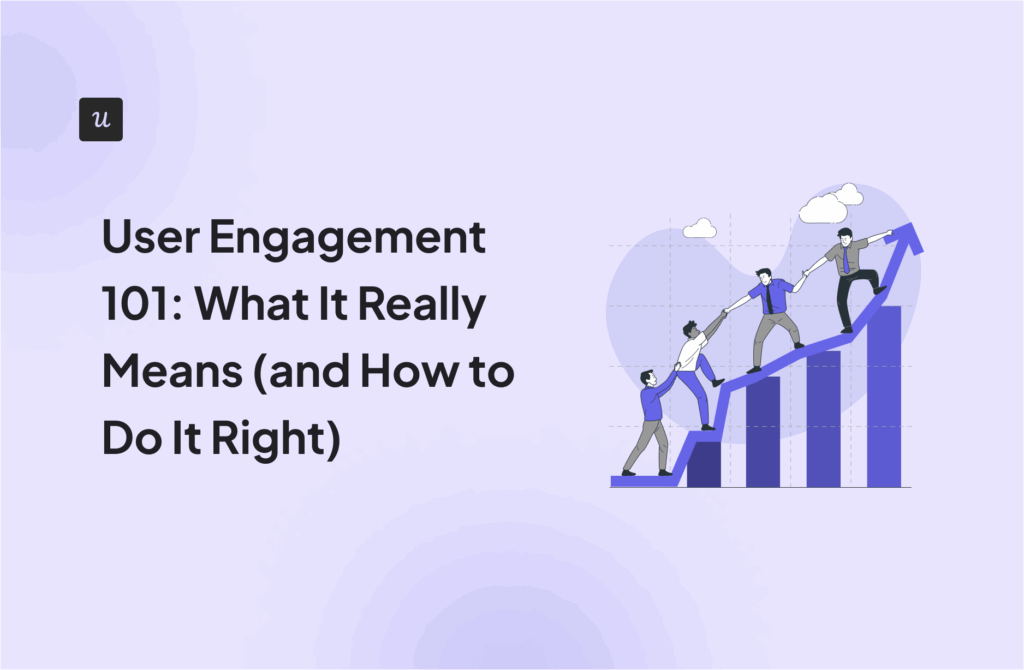
Sustainable growth is the biggest priority for any SaaS business that wants to succeed. Building compounding growth loops will help get you there. It’s what companies like Dropbox, Loom, and Slack did to get to where they are today.
In this article, we’ll cover:
- What growth loops are and what makes them so effective.
- The different types of growth loops and their intended benefits.
- How Loom, Slack, Dropbox, and G2 implemented loops that skyrocketed their growth.
Let’s get started.
Try Userpilot Now
See Why 1,000+ Teams Choose Userpilot

What are growth loops?
Growth loops are a SaaS growth strategy that involves embedding marketing into the product so that public user outputs continue to produce new inputs.
They come in many formats including referral programs, user-generated content, branding embeds, and more.
The growth loop model helps determine how to reinvest the output of one cycle of the loop into the next cycle to get more user signs.
They provide compounding growth which is essential for sustainable growth.
Understanding the growth loops framework
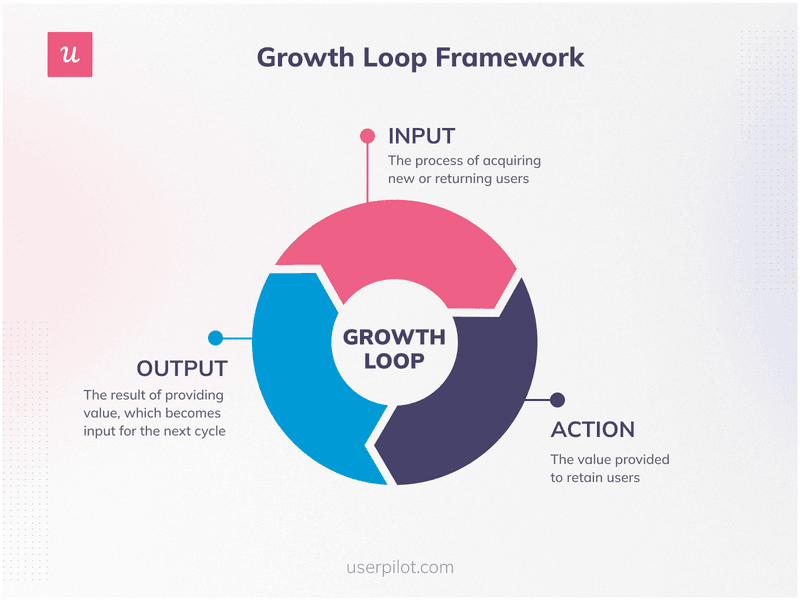
The growth loop framework consists of three parts – input, action, and output.
- Input: Input is the strategies you use to acquire new users, such as ads, social, SEO on different search engines, email marketing, etc.
- Action: Action is the process a user takes to get value from your product, such as testing it out for the first time or exploring new features.
- Output: Output is the compounding effect you get from the user’s action. This is the key moment as it should lead to more users and more output.
The origins of the AARRR funnel framework
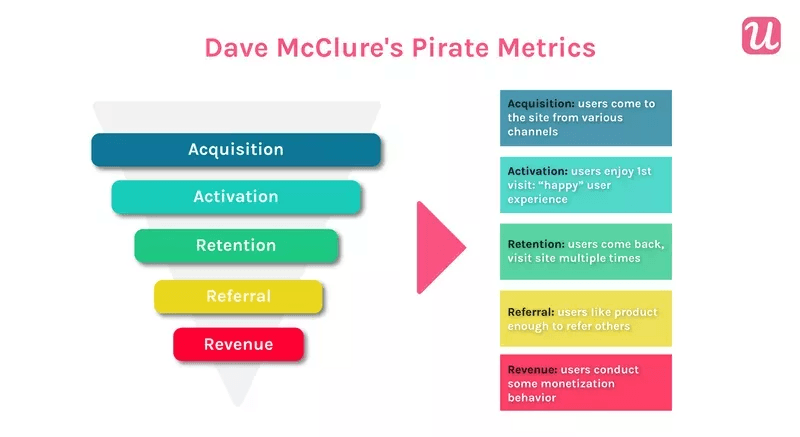
The Pirate Metrics Framework, a system developed by Dave McClure from 500 Startups, maps out the customer journey into five stages: Acquisition, Activation, Retention, Referral, and Revenue (AARRR).
- Acquisition – This is the top of the funnel, where people visit the website for the first time, coming from various channels and search engines.
- Activation – This is when a new user experiences value from the product for the first time.
- Retention – Customers continue to experience value, have a positive experience, and stick around for a longer period.
- Referral – Customers love the product so much that they turn into customer advocates, sharing their praises to their own network (often referred to as word-of-mouth marketing).
- Revenue – Users expand their use of the product and spend more money by up-selling, cross-selling, or by purchasing add-ons.
What is the importance of the AARRR funnel for B2B software marketers?
Growth funnels help you target your marketing and sales efforts for every stage of the customer journey while also recognizing where you’re losing users along the way.
By defining and tracking the path that users take from acquisition to revenue, you can optimize the funnel every step of the way to improve the conversion rate.
What is the difference between an AARRR funnel and a growth loop?
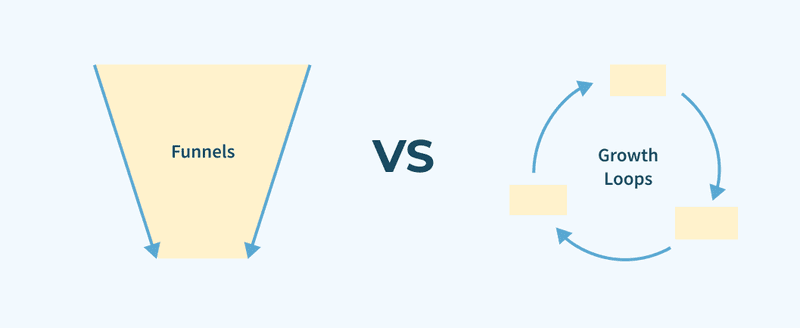
The AARRR funnel is a top-down growth model that follows a linear growth pattern through the customer journey stages.
In the AARRR funnel framework, the emphasis is on getting as many leads as possible into the top of the funnel using acquisition efforts. You have to constantly add new leads to the top of the funnel to keep growing.
On the other hand, loops work by using self-perpetuating closed systems to drive sustained growth.
There is no need to constantly feed growth loops but as the steps are far more unique to the product itself, you need to create a good starting point to introduce growth loop action.
Why funnels are not enough to drive product growth
Funnels on their own limit product growth potential for various reasons.
- Funnels create functional silos within teams.
In the growth funnel model, departments within a company are in charge of one stage of the funnel, owning that stage’s key performance metrics. This is problematic because they’re incentivized to max out their metric, potentially to the detriment of other stages of the funnel (the ones they’re not responsible for).
For example, marketing teams are responsible for the acquisition stage. If their performance is judged on how many leads they acquire, they’ll choose quantity over quality, sending poor-quality leads into the funnel.
- Funnels are one-directional.
Once a user passes through the stages of the funnel and produces outputs, their journey is over. Their value to your company is stagnant.
On the other hand, growth loops reinvest customer outputs so that it attracts more users to the cycle.
- A funnel is time-consuming and expensive.
Getting new leads into your funnel takes constant effort and budget to maintain. Since it’s one-directional, you have to keep spending money on marketing activities, like ads, to keep the top of the funnel full enough to drive revenue.
What makes growth loops effective?
- A growth loop provides sustainable compounding growth.
Since growth loops are based on reinvesting outputs to produce more inputs in the next cycle, growth compounds over time as output size increases.
- Loops are more cost-effective at generating growth.
Acquiring a new customer is more expensive than retaining an existing one. If you can leverage existing customers to feed new people into your product, that acquisition loop is way less expensive than traditional marketing methods, like ads.
- Loops bring teams together to work toward common goals.
Growth loops force teams to work together, regardless of their department, so teams can’t be optimized for their own metrics for the sake of others.
Various types of growth loops based on their goals
There are three common types of growth loops that SaaS companies use to achieve their goals across the customer journey.
Acquisition growth loops
Acquisition loops encourage existing users to bring in new users.
New customers sign up for your product, experience value, and then share your product with their network, feeding you new customers in the form of referrals.
For example, when a customer creates a document in Hellosign and sends it to someone to sign, they’re essentially promoting the product at the same time to potential new customers.
And once they’ve signed the document that they were originally sent, they get an invitation to sign up for Hellosign too.
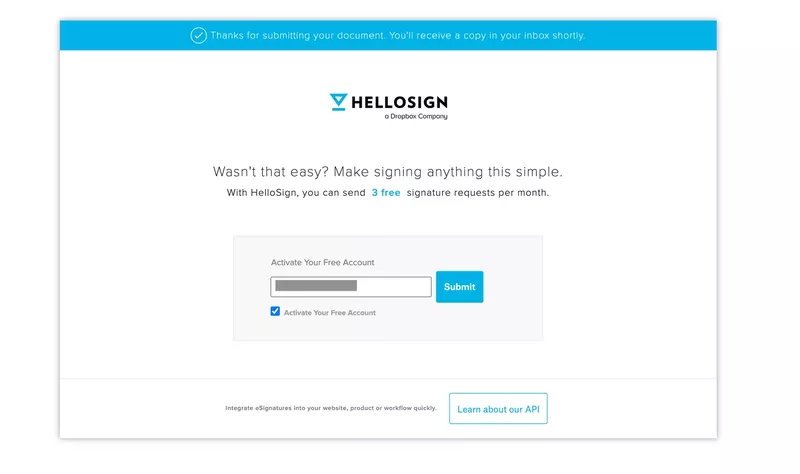
Engagement and retention loops
Engagement and retention loops can be used to help improve retention and fight churn by boosting customer engagement.
An engagement loop involves:
- A new user tests out the product for the first time, usually within a free trial.
- They experience the “aha” moment and start getting value from the product.
- Customer satisfaction increases and they turn into product advocates.
Explore how you can improve the retention in your mobile app with Userpilot’s brand-new mobile features.
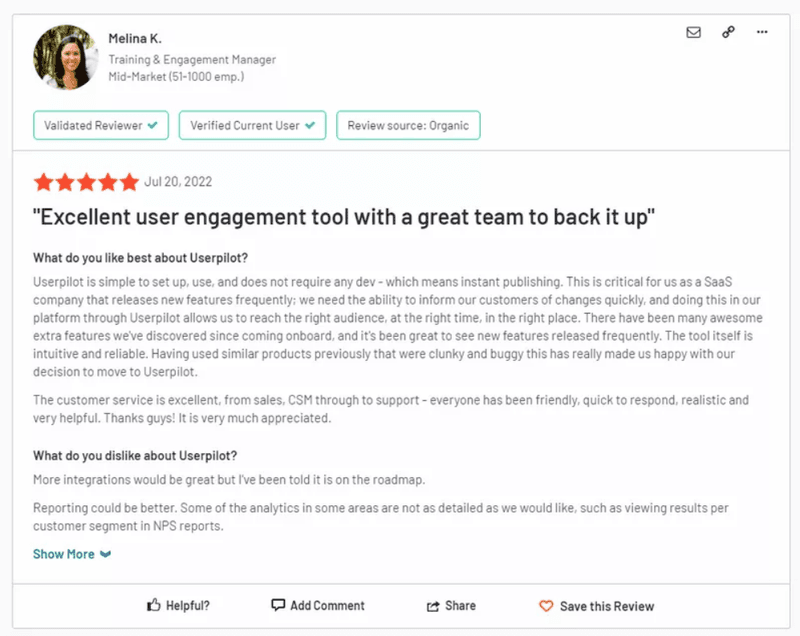
Expansion growth loops
Expansion growth loops are built to
grow revenue by selling more to existing accounts in the form of up-sells, cross-sells, or add-ons.
Here’s how they typically look:
- Users try out a product, experience value, and continue to use the product.
- Eventually, returning users max out their plan or are ready to try premium features.
- They’re encouraged to upgrade their account, buy another product, or add-on features to their existing plan.
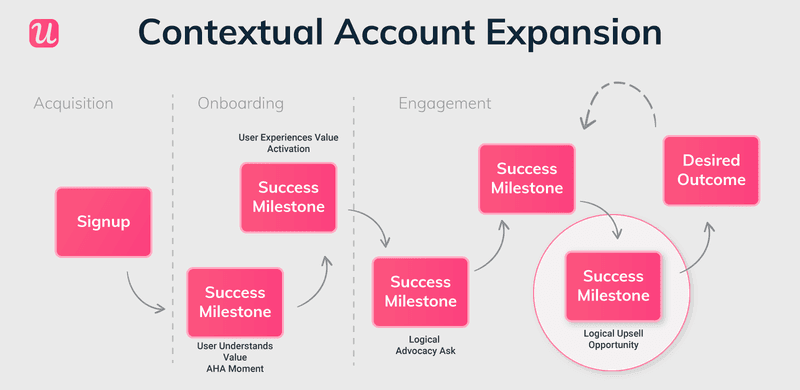
Types of growth loops based on their design
There are three main types of growth loop designs that SaaS companies use for different value creation.
Viral growth loops
Viral loops are built around getting existing users to spread the word about your product to their own network.
Different types of viral loops include:
- Word of mouth – happy customers refer your product to their network.
- Organic – Customers naturally want to share your product because they love it so much. Make organic sharing easier with “share” buttons embedded in the app.
- Casual contact – Similar to organic sharing, users are encouraged to “invite” their network to use the app with them.
- Incentivized – Users are rewarded for their referrals, in the form of financial compensation, account credits, or other enticing rewards.
Content-led growth loops
Content-led growth loops are designed to amplify user-generated or company-generated content, where you use content to contextually showcase the product in a helpful way.
Here at Userpilot, we use content-led growth loops by embedding our product’s use cases in relevant areas in our articles.
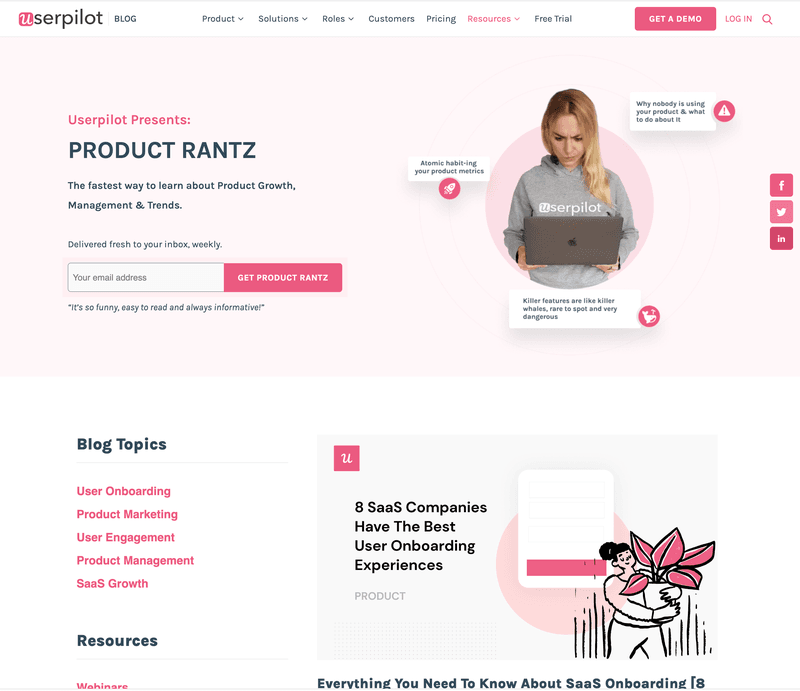
Product-led growth loops
Product-Led Growth (PLG) is a growth model that leverages the actual product to grow its user base and expand revenue.
The emphasis is on making the product as valuable as possible to the end user so that it improves both acquisition and retention.
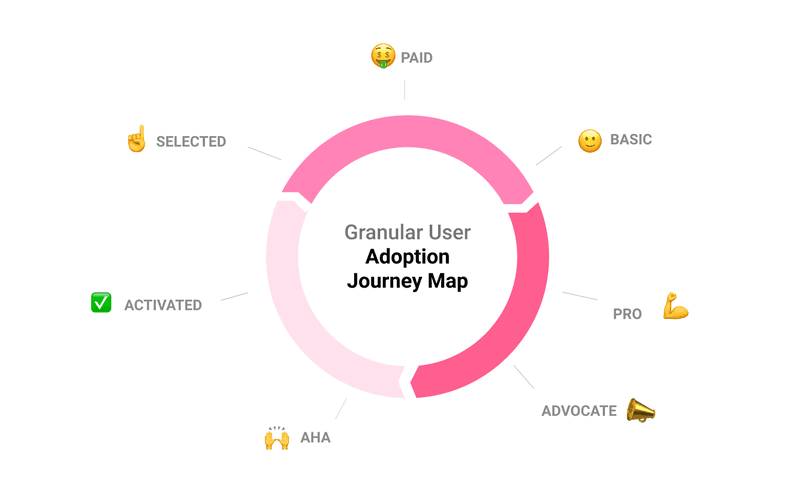
Examples of successful growth loops implemented by Saas companies
Growth loops are becoming the dominating framework for SaaS companies, revolutionizing product growth strategies.
Here are a few examples of growth loops in action.
Slack – personal viral growth loop
Slack is a workplace messaging tool that uses the power of personal viral growth loops to acquire new users.
Slack added a feature called Slack Connect where you can invite or be invited into other people’s channels. That way, you don’t need your own team to use Slack – you can join other teams.
By doing this, new users who are invited to other channels learn about Slack and try it out for themselves, keeping it top of mind for the future when they need a messaging tool for their own team.
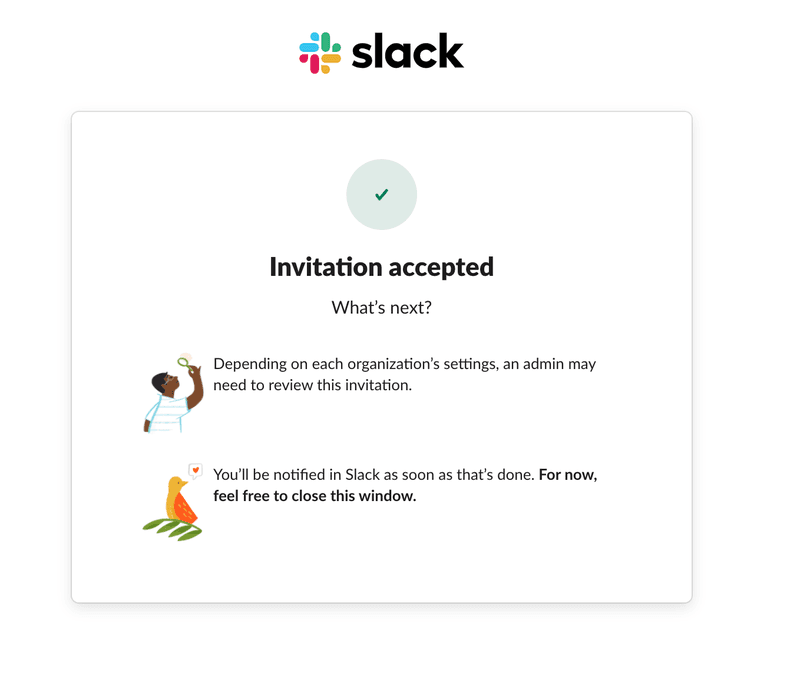
Dropbox – referral viral loop
Dropbox is a cloud-based document storage tool that was one of the first to lean on referral viral loops for its early growth.
A referral viral loop incentivizes customers to invite their network to try out the product.
In Dropbox’s case, they encourage their customers to invite new users in exchange for free storage space.
They drive growth even faster by waiting until users are about to run out of storage to encourage them to refer to their friends. That way, they’re more likely to take action.
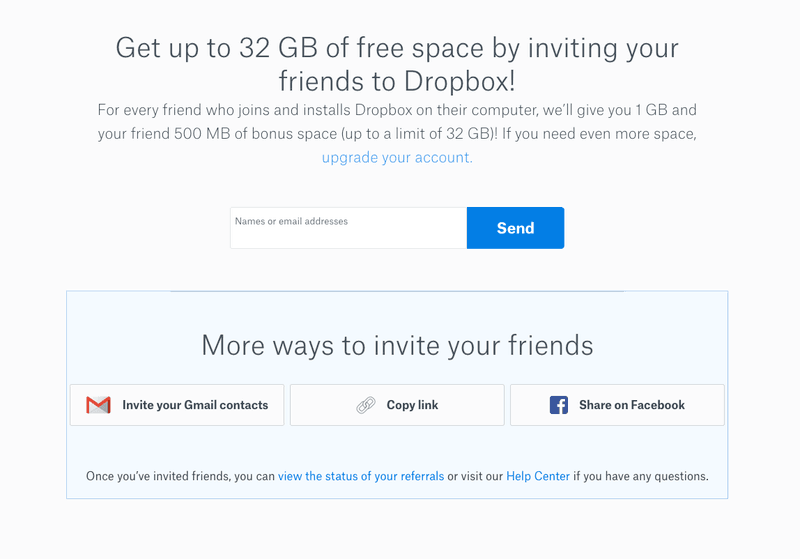
G2 – user-generated content loop cycle
G2 is a business software and services review platform that relies on a user-generated content loop cycle to grow its own organic traffic.
G2 relies on its user-generated reviews to appear for search terms on Google. This gives them increased brand recognition and brings more visitors to the site.
On top of that, they drive revenue growth because more companies want to pay for their services to get their products showcased.
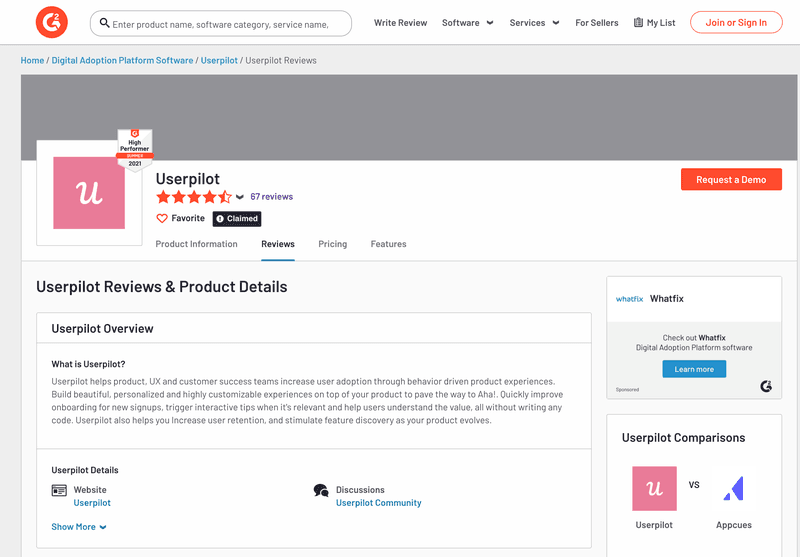
Loom – embedded loop cycle
Loom is an async video messaging tool that uses an embedded loop cycle to spark product virality.
Users can record a video message in Loom which Loom lets them share for free. And when someone who isn’t using Loom views the video, they automatically get an invitation to try Loom themselves.
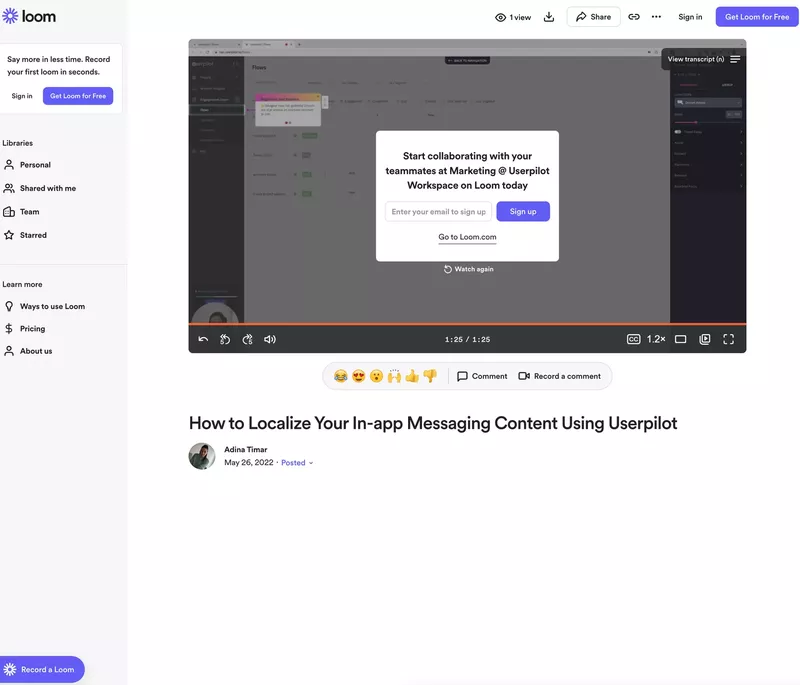
Implementing growth loops in your product growth strategy: How Userpilot helps
To start using growth loops in your product growth strategy, first, start by identifying the touch points in the user journey where you can make the biggest impact.
Start with one type of growth loop. Then, build a segment of your users with Userpilot. In the example below, we built a segment of power users who are the most active in our product.
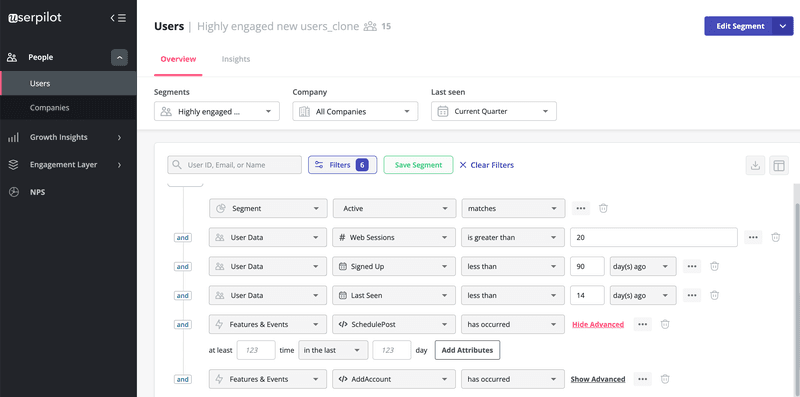
Then, you can prompt them to take action depending on whichever growth loop you chose to implement. In this example, we ask them to review our platform on G2 which will create a user-generated loop and will lead to new users learning about our product and opting in.
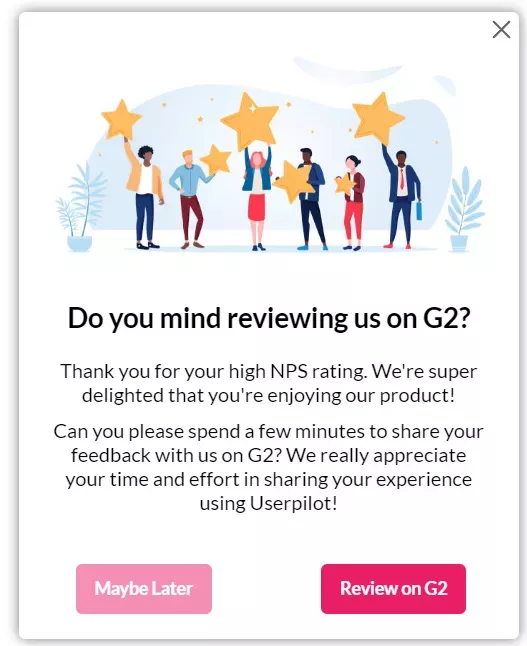
Conclusion
Growth loops are the key to sustainable growth that doesn’t break the bank long-term. Their compounding effect helps to bring in new users, retain existing ones and expand revenue.
You can implement them in your growth strategies to connect acquisition, retention, and monetization to produce more ways to distribute your product.
Want to get started with building growth loops? Get a Userpilot Demo and see how you can build in-app growth loops code-free.




